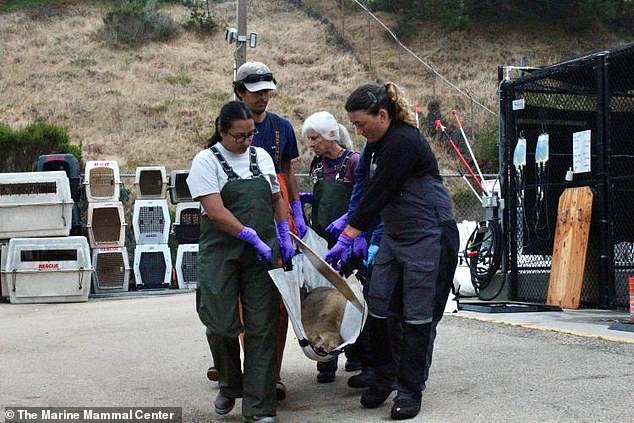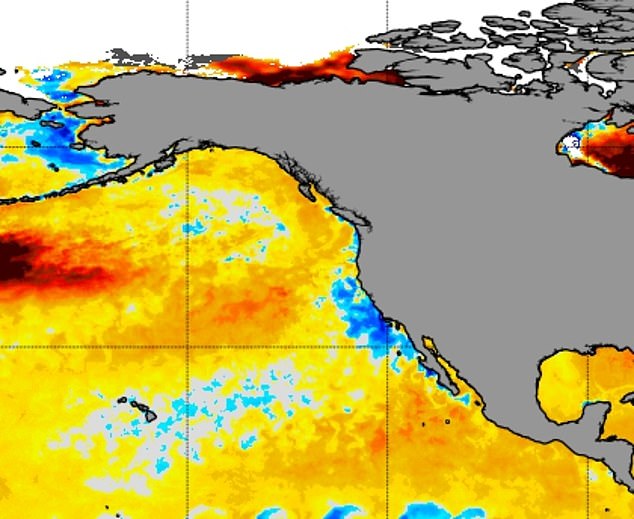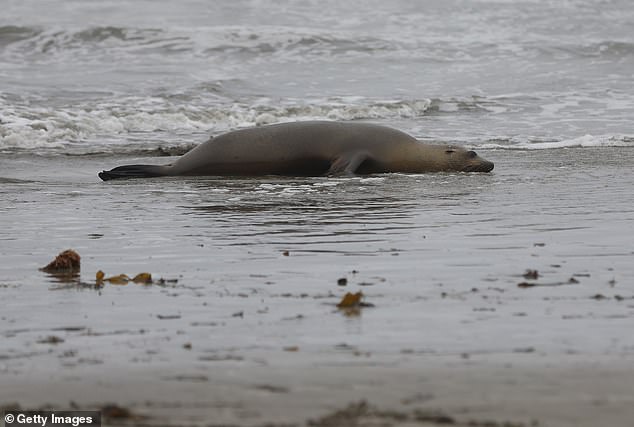The reason sea lions are suddenly dying in huge numbers along beloved California coastline
A wave of sick sea lions is washing up along the California coast, suffering from symptoms of algae poisoning, according to experts.
The Marine Mammal Center in Sausalito has helped 90 sick sea lions in San Luis Obispo County since July 29. Nearly 30 percent of the animals they helped have died.
According to experts, the sea lions are suffering from domoic acid poisoning, a neurotoxin that attacks the brain and heart. National Oceanic and Atmospheric Administration (NOAA).
The strong upwelling of nutrient-rich water from the deep ocean causes a bloom of harmful algae.
“Unfortunately, many animals die on the beach before we can rescue them, indicating high levels of exposure to domoic acid,” said Ruth Dover, Managing Director of the Channel Islands Marine & Wildlife Institute.
A wave of sick sea lions washes up along the California coast, suffering from symptoms of algae poisoning

Experts discovered that the sea lions were suffering from domoic acid poisoning, a neurotoxin that attacks the brain and heart
The Channel Islands group says it is receiving nearly 100 calls a day about sick marine mammals and has rescued 45 sea lions in the first 10 days of the outbreak.
“The good news is that people realize something is wrong and know who to call,” Dover said. “The bad news is that a lot of these animals are really suffering.”
‘This is particularly worrying because this bloom was not previously an annual phenomenon.’
The strong upwelling that causes the algal bloom often occurs in spring and summer, when the wind pulls cold water from the deep ocean up the coast.
Last year, hundreds of sea lions and dozens of dolphins died along the Southern California coast from domoic acid.
According to NOAA researchers, this year’s short-lived local marine heat wave may have warmed coastal waters, potentially causing algae to grow faster.
Domoic acid, a neurotoxin produced by the algae Pseudo-nitzschia, enters the food chain and makes marine mammals sick when they eat prey.

Satellite maps off the coast of California show colder than normal water welling up, providing ideal growing conditions for the toxin-producing algae

Teams rescue stricken sea lions and take them to a rehabilitation center, but for many their condition may be too advanced to help.
“The upwelling helps make the California coast a rich ecosystem, but in this case we see another effect on marine mammals,” said Clarissa Anderson, director of the Southern California Coastal Ocean Observing Network.
Satellite maps off the coast of California show colder than normal water welling up, providing ideal growing conditions for the toxin-producing algae.
“The levels we are finding in these animals are unprecedented,” Giancarlo Rulli, a spokesman for the Marine Mammal Center in Sausalito, told the Los Angeles Times‘All hands on deck.’
Teams rescue the affected sea lions and take them to a rehabilitation center, but many are too advanced to respond to treatment and must be euthanized.
NOAA advises beachgoers and their pets to keep a safe distance from infected animals on land and to report them.
